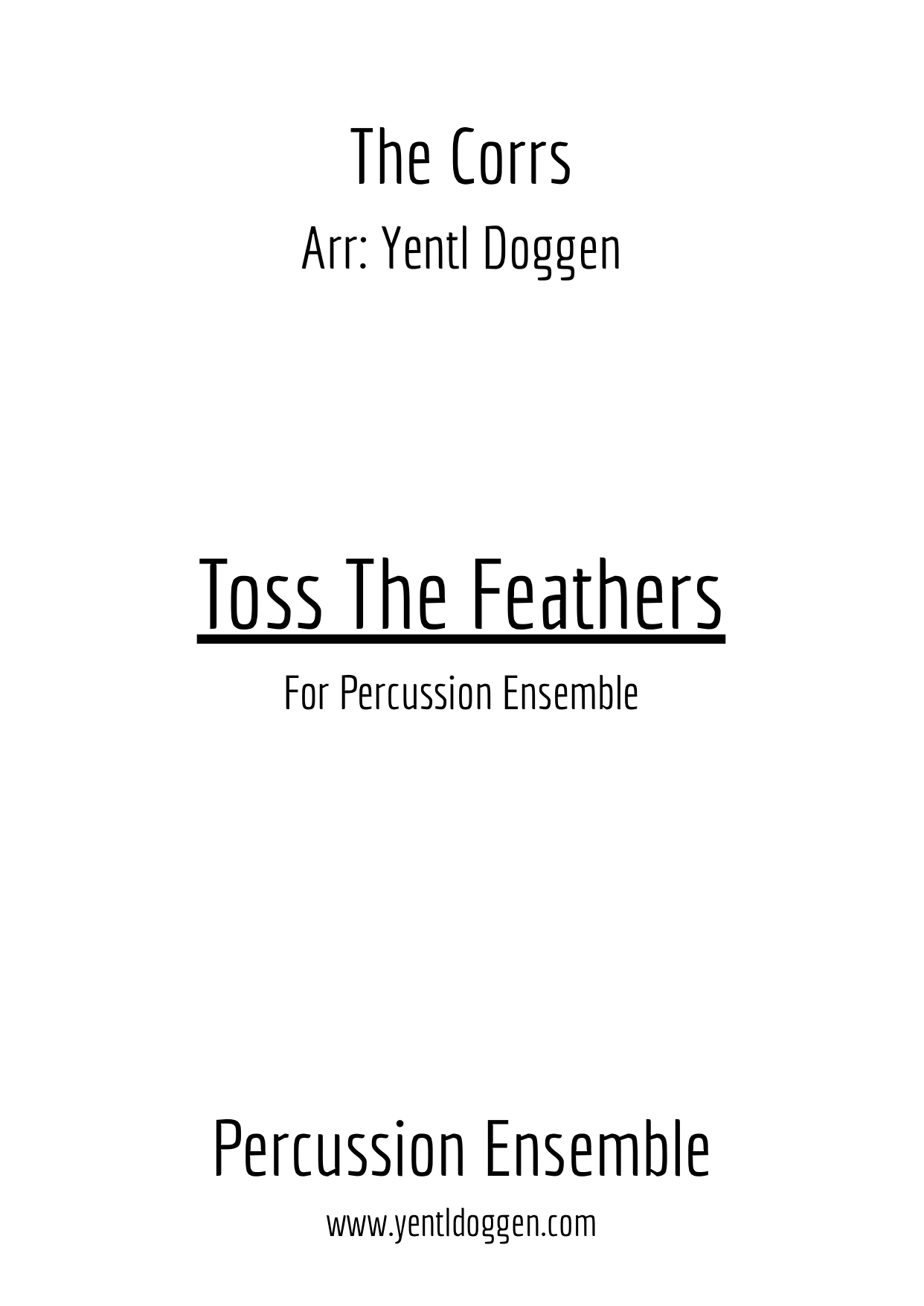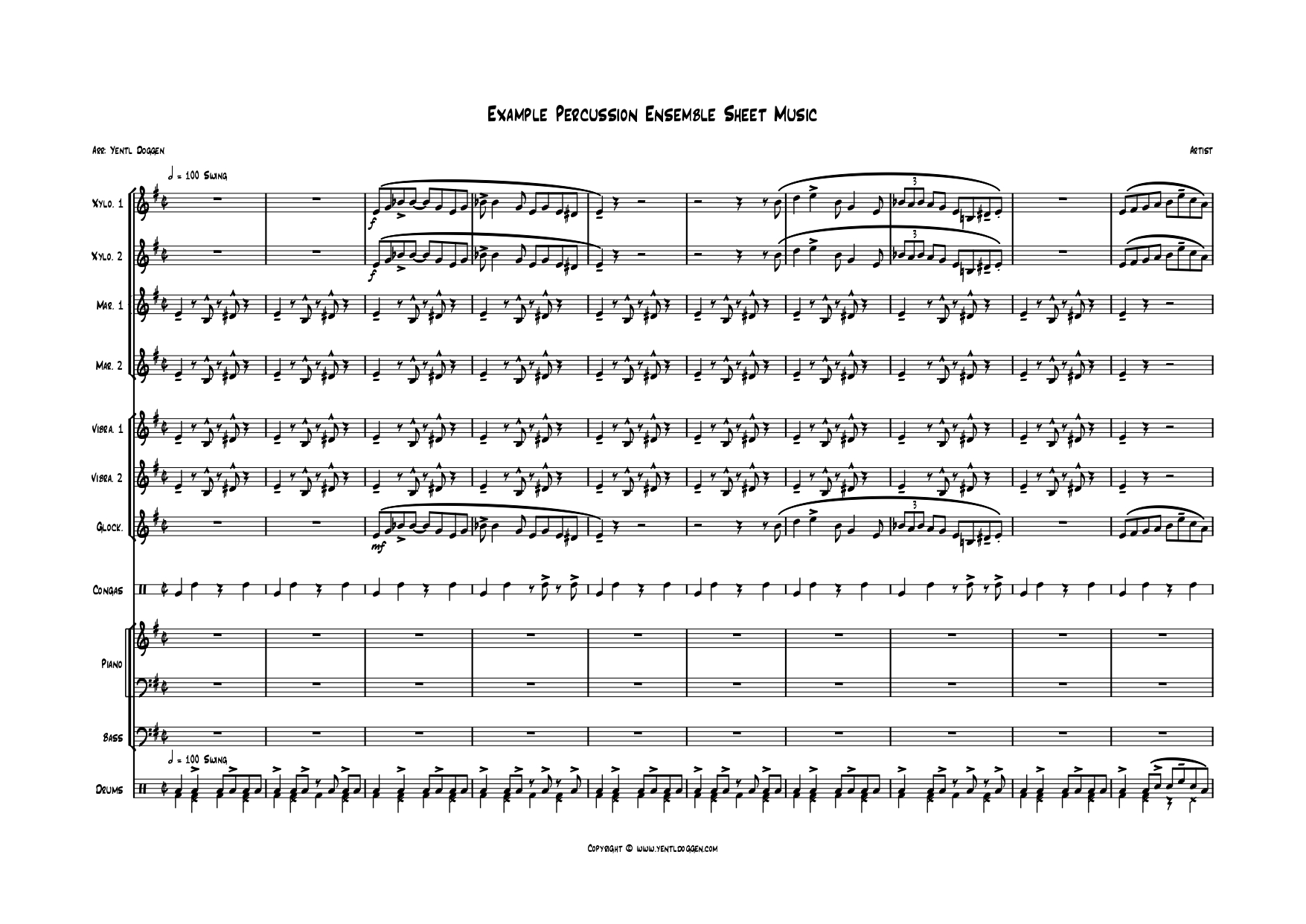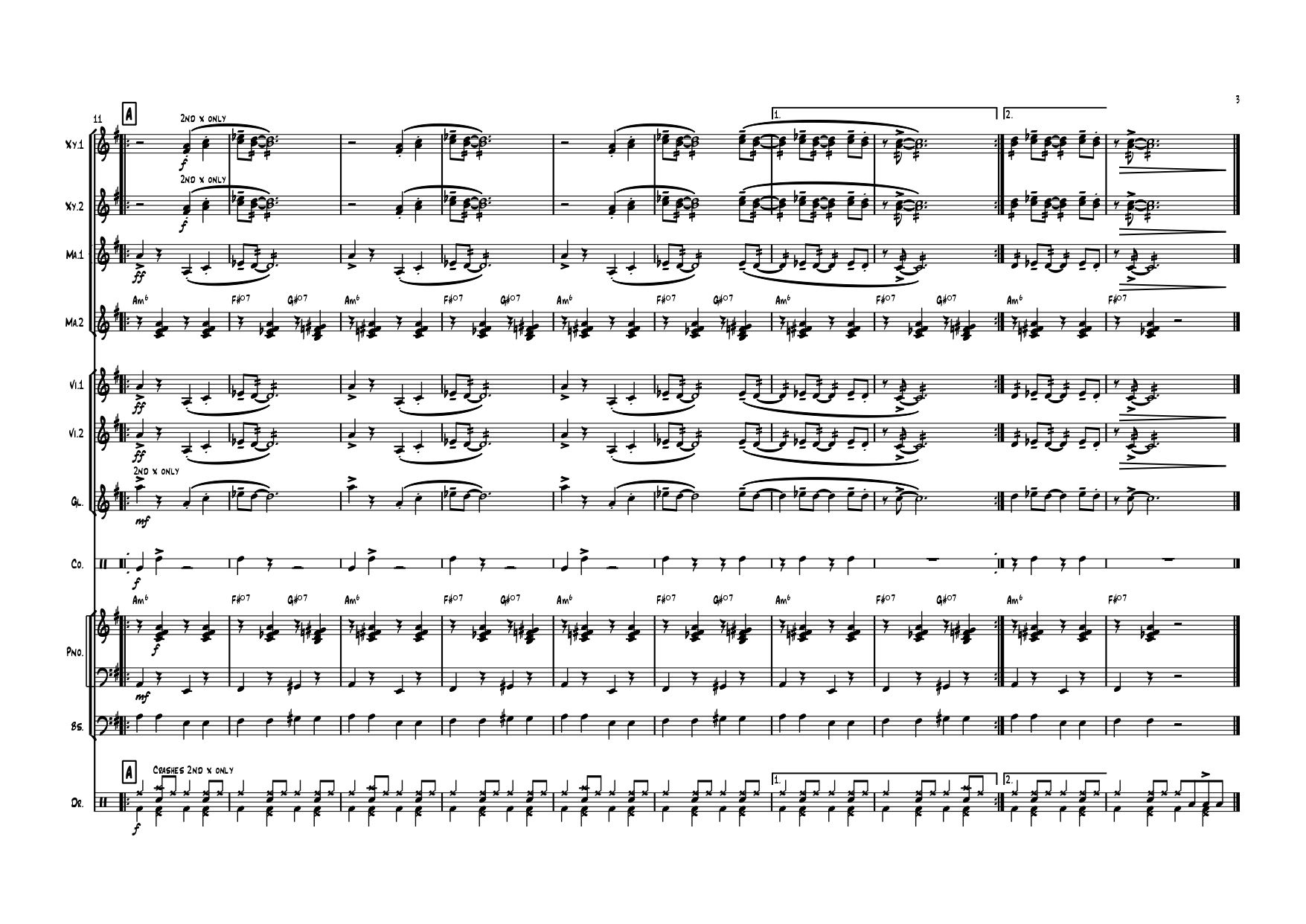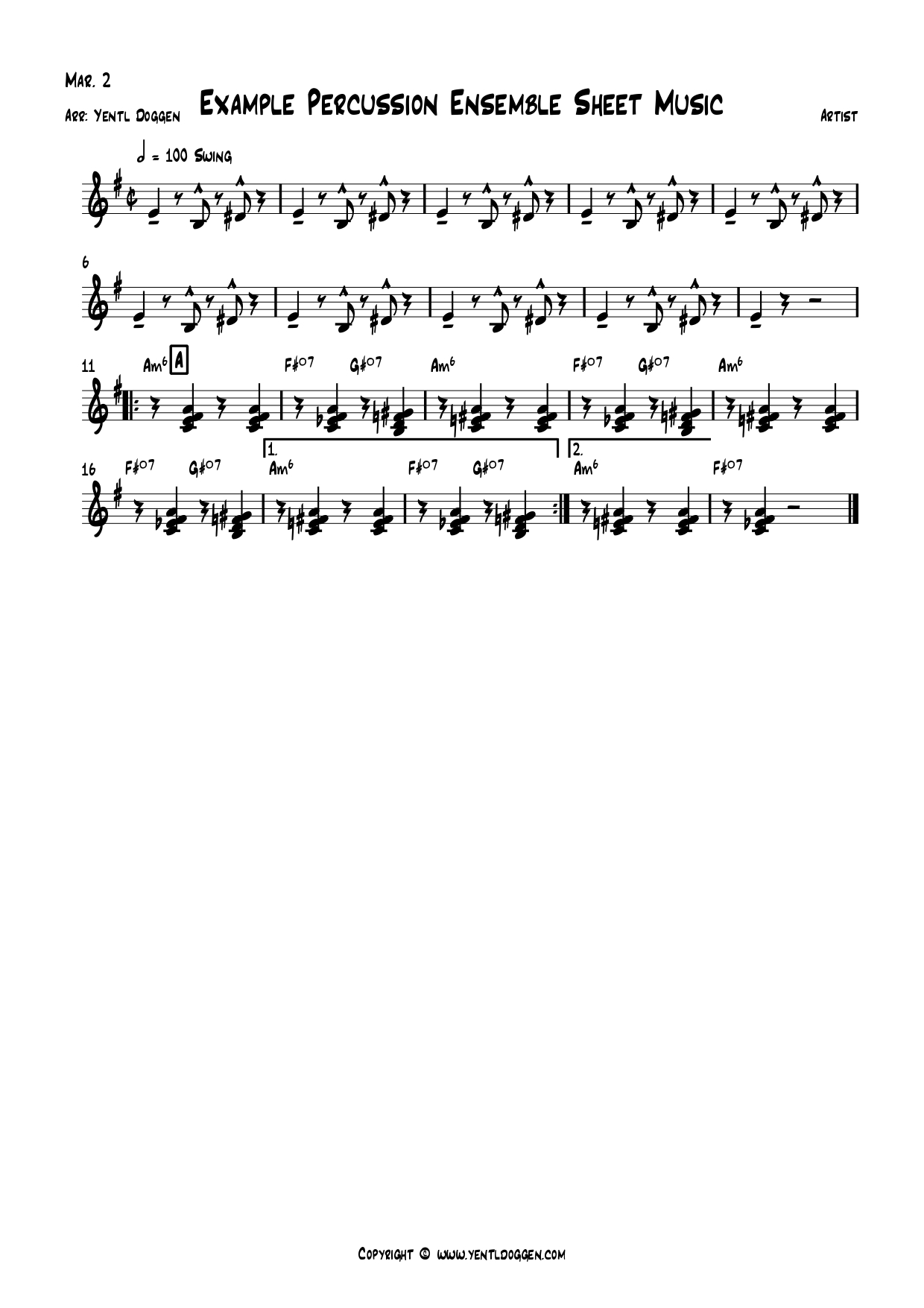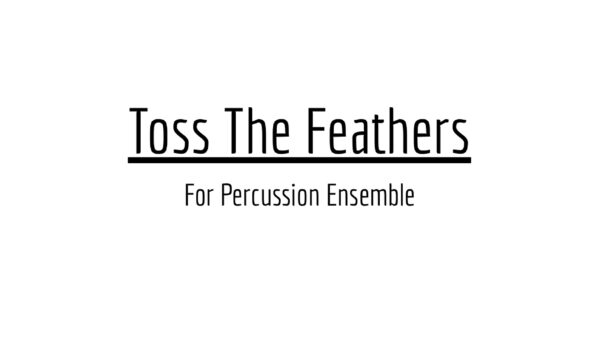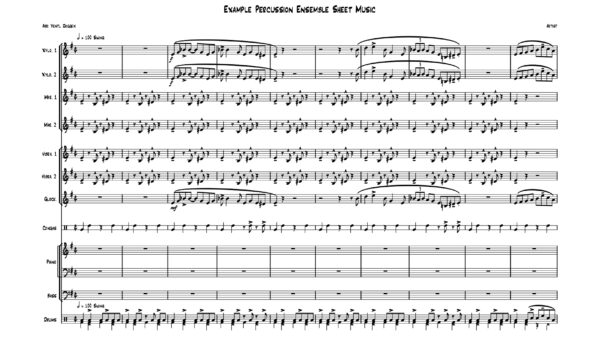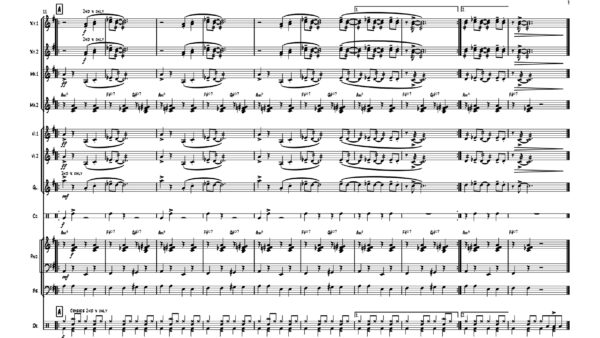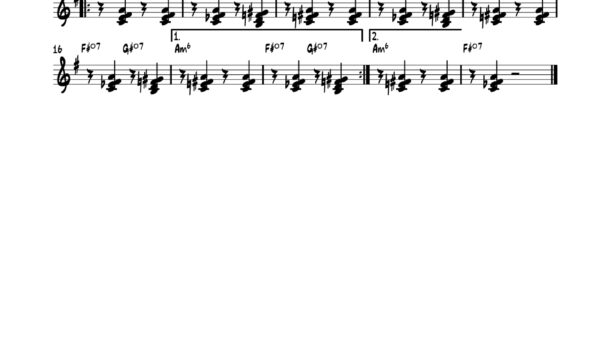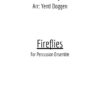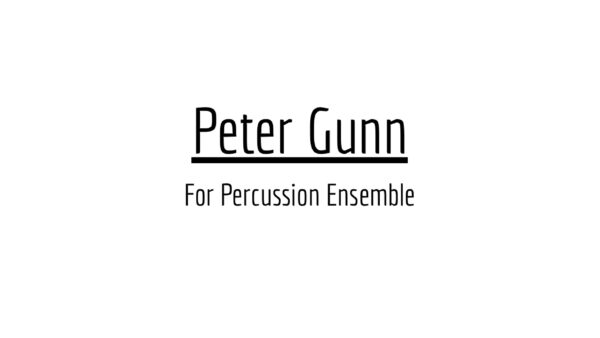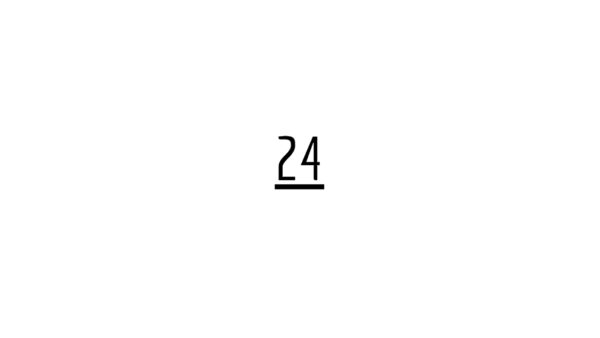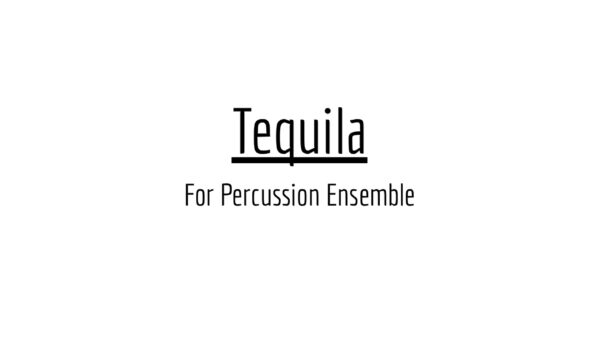Toss The Feathers (The Corrs) for Percussion Ensemble | Full Score PDF
Digital download (PDF) for the Toss The Feathers sheet music!
Toss The Feathers
Toss The Feathers is a well-known traditional Irish folk Reel. The title is supposedly a euphemism for engaging in sexual intercourse. Its famous melody has been used in more than 200 adaptations. One of the most recognised versions is the recording by The Corrs on their album: Forgiven, Not Forgotten. Although there are many interpretations of the main melody, the D Mixolydian version is the most common. My first contact with, Toss The Feathers was in high school when I was invited to fill a spot as a guitarist in a folk ensemble. I immediately liked the melody, and the idea grew to write an arrangement for Percussion Ensemble.
As the artistic director and conductor for the Drum- & Percussionband Paal, I needed to find a song for the yearly soloist concert organised by the local wind band. My brother, Siebe Doggen, was learning the violin, and I saw Toss The Feathers as the perfect opportunity to combine the violin with our percussion ensemble. However, since it was too much hassle to continue playing the violin version afterwards, I re-arranged the arrangement to make it more suitable for the Percussion ensemble alone. The Ensemble version of Toss The Feathers is written for 12 players and can be extended to up to 16 players. Since the melody is quite fast, the arrangement is for an intermediate to an expert ensemble.
Toss The Feathers for Percussion Ensemble:
Xylophone & Marimba:
The xylophone and marimba parts in Toss The Feathers for Percussion Ensemble are pretty challenging. Although the main melody isn’t that hard, playing it continuously at the correct tempo is demanding. Players should have a sticking pattern that works for them and practise it slowly until they can play the melody flawlessly.
Vibraphone & Glockenspiel:
The vibraphone part is preferably doubled on another vibraphone and has all the song’s harmonies. The chords should ring, and all separate notes should be damped while playing the following note (for example, the F# needs to be muted while playing the G). The Glockenspiel has all the important notes from the vibraphone without the complete chords. It is also preferable in the Glockenspiel to mute notes to ensure they do not sound through each other.
Chimes:
Together with the vibraphone and glockenspiel part, the chimes are playing notes from the song’s harmony. The main difference is that the chimes should stay in the background. I’ve always told the Chimes player in my ensemble that he is the church chimes ringing in the background while the people in town are dancing to Toss The Feathers. It is vital for the atmosphere but optional for the song.
Drum Set:
Apart from the drum solo in the D-section, the drum set part is pretty straightforward. It should have a rock feel that supports that Irish Folk Song vibe. The drum solo is not limited to playing the drums. You can add oil drums or bass drums to get that show effect going. Please watch the Drum- & Percussionband Paal version to get the idea. For more inspiration, you can also watch versions by The Corrs.
Timpani, Tambourine & Bongos:
Meant in the best way possible: the timpani, tambourine and bongos part are the fillers in this song. These instruments and their rhythms give the Percussion Ensemble version of Toss The Feathers an underlying medieval character. These parts should work together as if they were one.
Piano:
The bas part in the piano is very similar to the timpani part and should work together very well. The melody part in the piano is a skimmed version of the main melody, with as main difference that the eight-note feel contributes to that medieval feeling.
My website has multiple ways to keep in the loop with music and travel-related updates. Make sure to follow my Instagram and Facebook pages to get the latest content on your socials. To get the updates in your mailbox, subscribe to the newsletter. I will post plenty of free drum lessons and other music and drum-related advice on this website in the future! Check out the other music education posts if you haven’t already!


